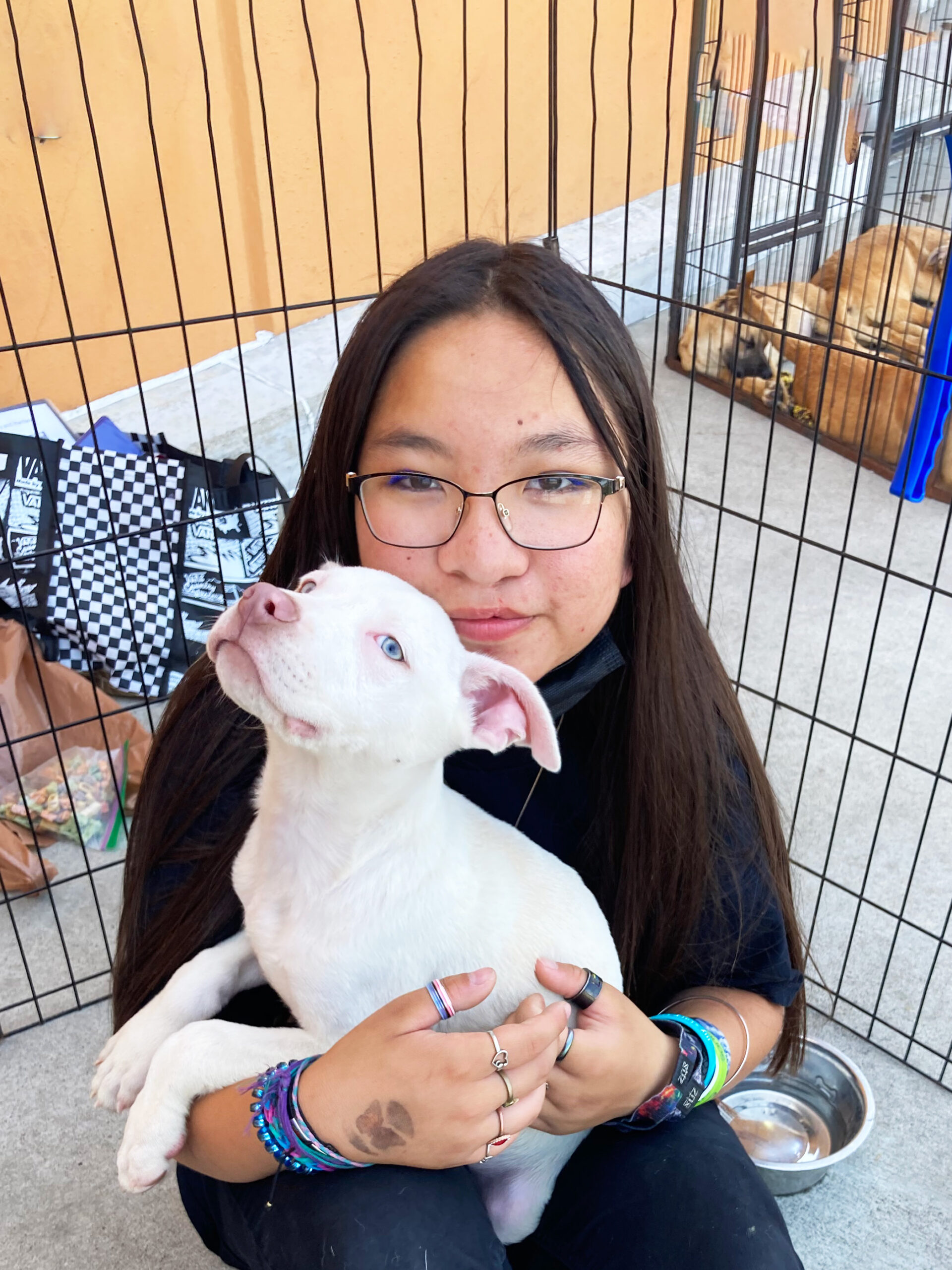MENTAL HEALTH GUIDE
Eating Disorders
Eating disorders in children and adolescents are serious but treatable illnesses that can have life-threatening physical consequences. Those who suffer from an eating disorder often become fixated with body image, food, and/or weight. Growing research suggests a combination of biological, psychological, and sociocultural factors contribute to the development of an eating disorder. Early detection and intervention of eating disorders are important to increase the likelihood of a full recovery.
Crisis resources
If your child expresses thoughts of wanting to harm themselves or others, call 9-1-1 or visit the nearest Emergency Department.
National Eating Disorders Helpline
(800) 931-2237
Text “NEDA” to 741741
External resources
National Institute of Mental Health (NIMA) www.nimh.nih.gov/health/topics/eating-disorders
National Eating Disorders Association (NEDA)
www.nationaleatingdisorders.org
Maudsley Parents
maudsleyparents.org
National Association of Anorexia Nervosa and Associated Disorders (ANAD)
anad.org
Learn more about CHOC’s pediatric mental health services
At CHOC, we specialize in providing a full spectrum of pediatric mental healthcare, including inpatient, intensive outpatient and outpatient program services.
Get 24/7 advice from CHOC
Eating Disorders Overview
Eating disorders affect more than 30 million Americans and much more youth worldwide. These disorders can affect people of any age, gender, ethnicity, socioeconomic status, race, sexual orientation, body shape, and weight. There is no single known cause for eating disorders.
Who is at risk of an eating disorder?
Eating disorders have high comorbidity with other mental health diagnoses, including anxiety, depression, and substance use disorders. For example, 48-51% of people with anorexia nervosa, 54-81% of people with bulimia nervosa, and 55-65% of people with binge eating disorder are also diagnosed with an anxiety disorder.
Among U.S. females in their teens and 20’s, the prevalence of clinical and sub-clinical Anorexia Nervosa may be as high as 15%. In a large study of 14- and 15-year-olds, dieting was the most important predictor of a developing eating disorder.
From 1999 to 2009, the number of men hospitalized for an eating disorder-related cause increased by 53%.
What are the different types of eating disorders?
There are four main types of eating disorders:
- Anorexia nervosa. People with anorexia severely restrict calories to the point of starvation. There is an intense fear of gaining weight and a distorted perception of their body image. They may refuse to eat at all or only eat tiny amounts of food that have few calories.
- Bulimia nervosa. People diagnosed with bulimia nervosa binge on large quantities of food, then force themselves to vomit. They may also exercise compulsively and take laxatives to help rid their body of the calories they’ve eaten. People diagnosed with bulimia nervosa continue this cycle of binging and purging and may also excessively restrict calories in between binges.
- Avoidant Restrictive Food Intake Disorder (ARFID). Some people are not overly concerned with their weight or body image and may not be able to consume enough calories to stay healthy. These are not simply picky eaters; their restrictive eating can lead to serious medical consequences in ways that are very similar to anorexia and bulimia.
- Binge-eating disorder. This is also known as compulsive overeating. People diagnosed with binge-eating disorder consume excessive amounts of food without purging. They often eat uncontrollably despite feeling full. People diagnosed with binge-eating disorder may feel guilty or ashamed after a binge and go on an extreme diet as a result. Binge eating can occur in people of any weight.
What are the warning signs and symptoms of eating disorders?
- Preoccupation with weight, food, calories, body image, and/or dieting.
- Fluctuations in weight (both up and down).
- Refusing to eat certain foods or whole food categories (e.g., no carbohydrates, no dairy).
- Development of abnormal, secretive, extreme, or ritualized food or eating habits.
- Eating beyond the point of comfortable fullness.
- The disappearance of a large amount of food.
- Intense fear of weight gain.
- Loss of menstrual period in women.
- Extreme mood swings.
- Skipping meals or eating small portions.
- Frequent trips to the bathroom after meals.
- Abuse of laxatives, diet pills, or diuretics.
- Dizziness or fainting.
- Fear of eating after a scary experience with food (e.g., choking, vomiting).
- Excessive exercise.
 Print this section
Print this section
Learn more about CHOC’s Eating Disorders Program
CHOC offers both inpatient and outpatient pediatric treatment options

Tips for parents and caregivers of children with eating disorders
Eating disorders are complex medical and psychiatric disorders that can cause serious health problems for children and teens and, unfortunately, have increased tremendously during the pandemic. The National Eating Disorders Association helpline reported a 40% increase in calls from March 2020. Approximately 35% of those who called were 13-to-17 years old, which is a 30% increase from before the pandemic.
Seek medical evaluation
Eating disorders can cause a wide range of medical challenges. Schedule a visit with your doctor to ensure your child’s health is not at immediate risk.
Be honest and use “I” statements
Be open and honest about your concerns and stick to the facts. Point out what you have observed. For example, “I have noticed you stopped eating dinner with us.”
Be caring, but firm
Show compassion and understanding by listening to your child. Ask your child if they have their own reasons for wanting to change. If any of the above symptoms are present, remain firm in tackling problematic eating behaviors and the need for your child to seek professional support.
Foster self-esteem
Avoid commenting on your teen’s weight or size, or on others’. Focusing on shape and weight may send the message that the way someone looks is most important. Instead, practice body positivity and appreciation of qualities outside of appearances, such as curiosity and a sense of humor.
Model healthy attitudes and behaviors
Stay away from labeling foods as “good” or “bad”. Allow all foods in your home. Encourage balanced eating of a variety of foods.
Seek professional help
Most people with eating disorders require professional help to get better. Seek treatment from a team of providers, including a medical doctor, dietician, and psychologist. Getting timely treatment increases a person’s chances of recovery.
If your child expresses thoughts about wanting to kill themselves or is saying unsafe things, or if you suspect medical complications from eating disorder behaviors (such as fainting) call 911 or bring your child to the nearest Emergency Department.
 Print this section
Print this section
Tips for kids and teens with eating disorders
Eating disorders are complex and can feel overwhelming or defeating. While asking for help is key to recovery, there are also a few key pieces of advice you can follow that may help you cope as you seek treatment.
Understand size diversity
Everyone has a unique genetic composition that influences their bone structure, body size, weight, and shape differently. Your body can be healthy across a wide range of weights. It is normal for health to look different in different people.
Avoid comparisons
Try to stay away from comparing your body with your friends’ bodies or celebrities on TV and social media. Remember, we are all naturally different.
Ask yourself how you are feeling
Have you noticed any physical health effects or emotional effects of your eating behaviors? What changes are you willing to make in your life to establish a healthy relationship with food? What do you gain from your current eating habits?
Seek support
When you start to notice your eating habits are affecting your life, mood, and ability to concentrate, it is important to talk to someone about what you are going through. This can be with your parents or guardians, or another trusted adult. Remember that it is never too early to ask for help!
Get professional help
Getting help from a team of professionals, like your doctor, a therapist and a dietician can help you understand and manage your feelings and behaviors. You can contact the National Eating Disorders Helpline at (800) 931-2237 or text “NEDA” to 741741 for immediate support.
 Print this section
Print this sectionLearn more about CHOC’s Eating Disorders Program
CHOC offers both inpatient and outpatient pediatric treatment options
Eating disorders recommended reading
 Print this section
Print this section
Related guides
Eating disorders such as Anorexia and Bulimia can, at times, occur co-morbidly with other mental health conditions such as anxiety and depression. For additional information on mental health conditions that can occur alongside an eating disorder, please visit our other mental health guides.
Additional Resources
Eating disorder books
- When Your Teen Has an Eating Disorder, Lauren Muhlheim, PsyD (2018)
- Anorexia and Other Eating Disorders: How to Help Your Child Eat Well and Be Well (2014)
- Life Without Ed, Jenni Schaefer (2014)
- Brave Girl Eating, Harriet Brown (2010)
- The Body Image Workbook for Teens, Julia Taylor and Melissa Atkins Wardy (2014)
- What’s Eating You?, Tammy Nelson, MS (2008)
- Help Your Teenager Beat an Eating Disorder, James Lock, MD, Ph.D., Daniel Le Grange, Ph.D. (2015)
Related Articles
The guidance on this page has been clinically reviewed by CHOC pediatric experts.
For more health and wellness resources from the pediatric experts at CHOC:
Sign up for the Kids Health newsletter.
The contents of this webpage, including text, graphics, audio files, and videos (“Materials”), are for your general information only. The Materials are not intended to substitute qualified professional or medical advice, diagnoses, or treatments. CHOC does not recommend or endorse any specific tests, physicians, products, procedures, or other information that may be mentioned on or linked to this webpage. Always call your physician or another qualified health provider if you have any questions or problems. If you think you may have a medical emergency, call your doctor, go to the nearest emergency department, or call 911.
For more health information for your family visit health.choc.org










